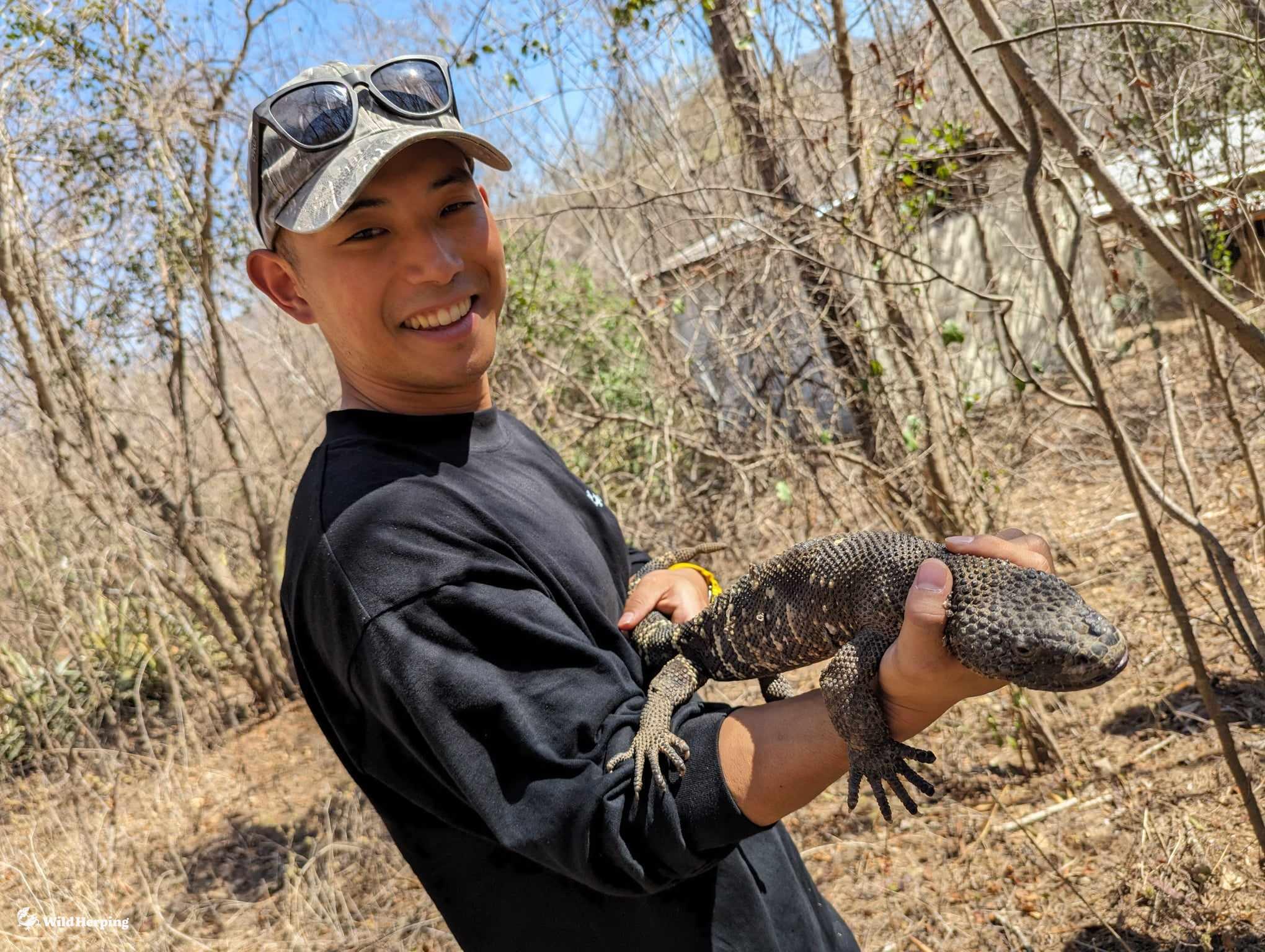We went birdwatching in West Papua, Indonesia. Overall, this year West Papua also experienced unusual weather conditions that have been common in recent years. Even in July, when it usually rains less, there was frequent rainfall, and bird activity was not as high as expected. However, the beautiful birds that inhabit the jungles of West Papua were still present, and we had many emotional encounters. We conducted observations in three main areas, so this report will be presented in three parts.
First, here is a report on the wildlife observed in Jayapura, located near the border with Papua New Guinea.
On the first day, we arrived at the airport early in the morning and began birdwatching on our way to our accommodation.
Brahminy Kite (Haliastur indus) was the first to appear. It feeds on fish, frogs, and crabs and is commonly found near water.

Rainbow Bee-eater (Merops ornatus) is mainly found in Australia but can also be observed here in New Guinea. It hunts insects while flying in open areas along roads.
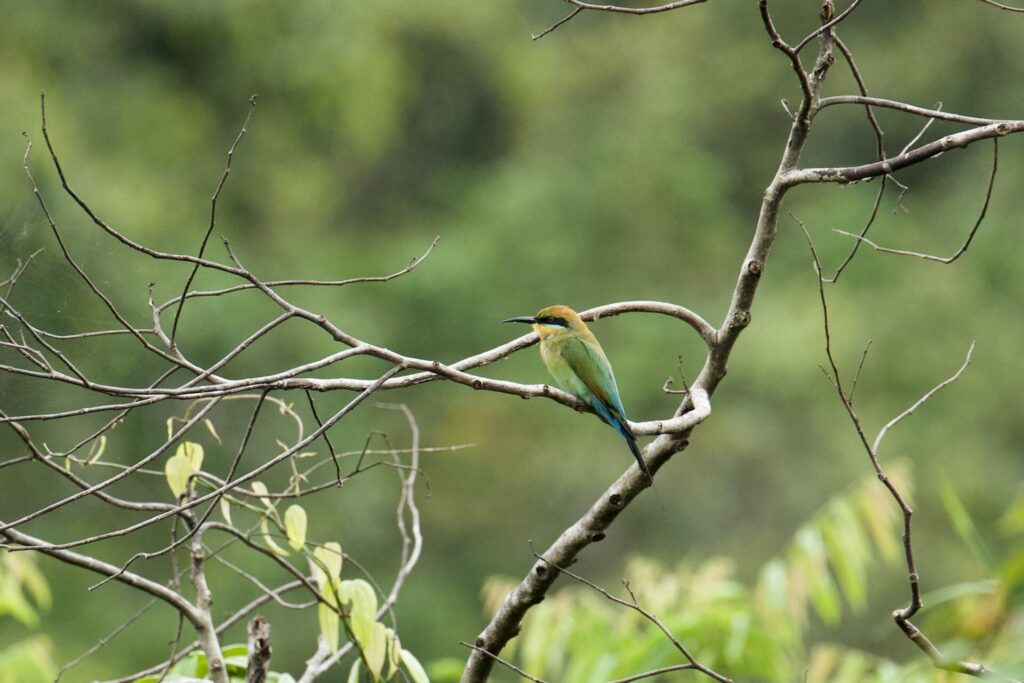
Bar-tailed Cuckoo-Dove (Macropygia nigrirostris) was also observed in the same area. It is characterized by its black beak and long tail with striped patterns.
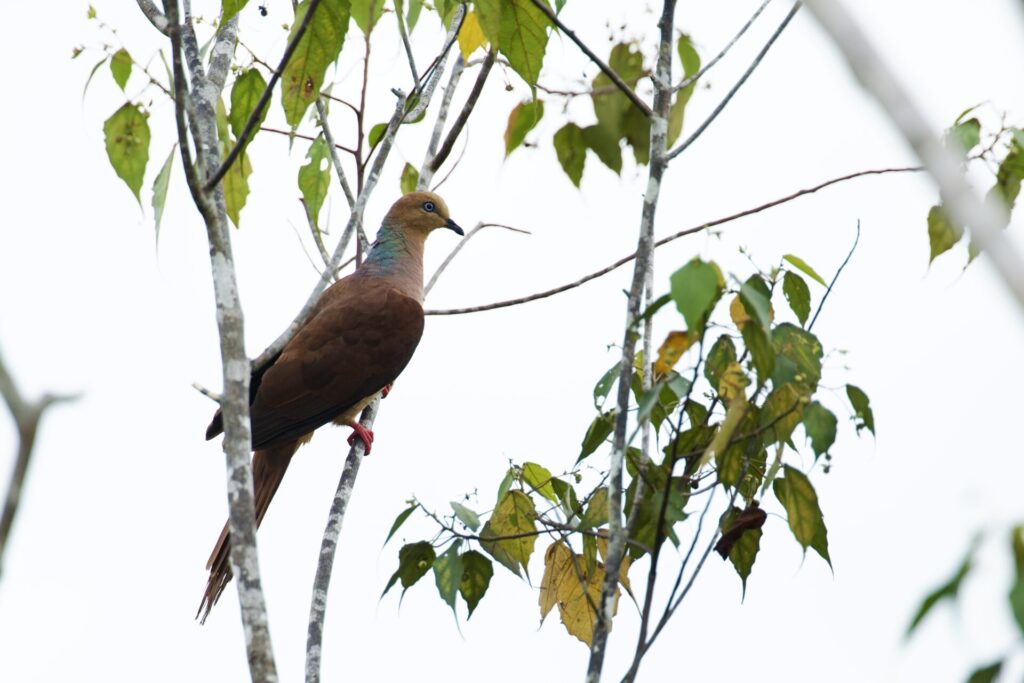
Oriental Dollarbird (Eurystomus orientalis) is a beautiful bird commonly seen in lowland West Papua. We also saw it perched on utility wires along main roads.
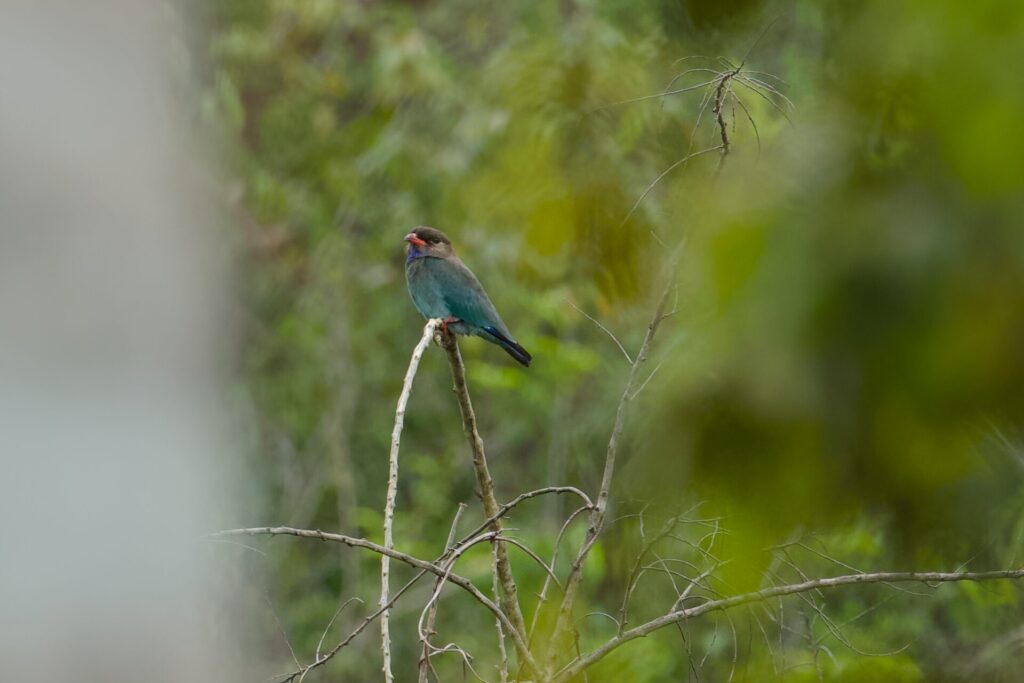
Sacred Kingfisher (Todiramphus sanctus) is said to have been named by indigenous people who considered it a sacred bird.
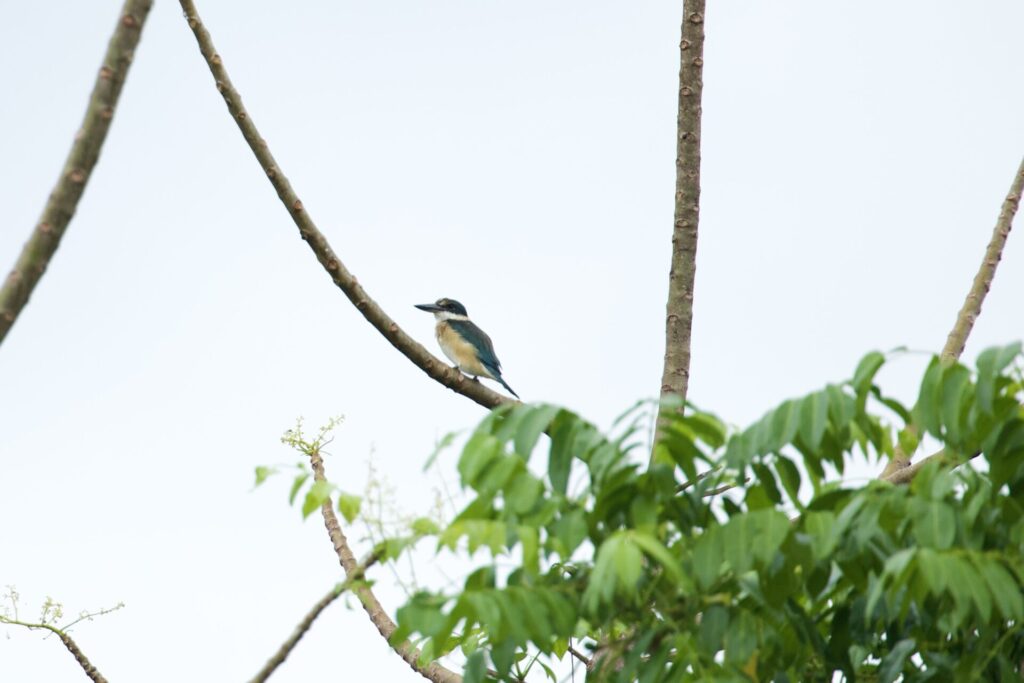
Variable Goshawk (Tachyspiza hiogaster) was seen perched on utility wires. Later, we also observed a white-colored individual in the forest. As its name suggests, this species has color variations among individuals, and it was surprising to see such a pure white bird in the dense green jungle. Nature is truly mysterious.
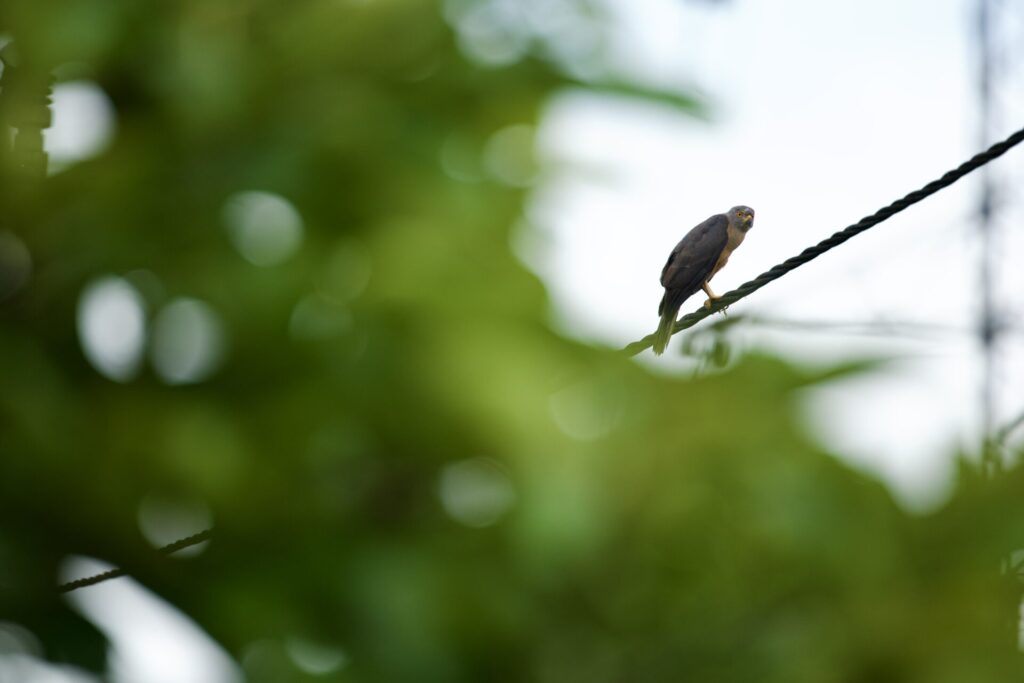
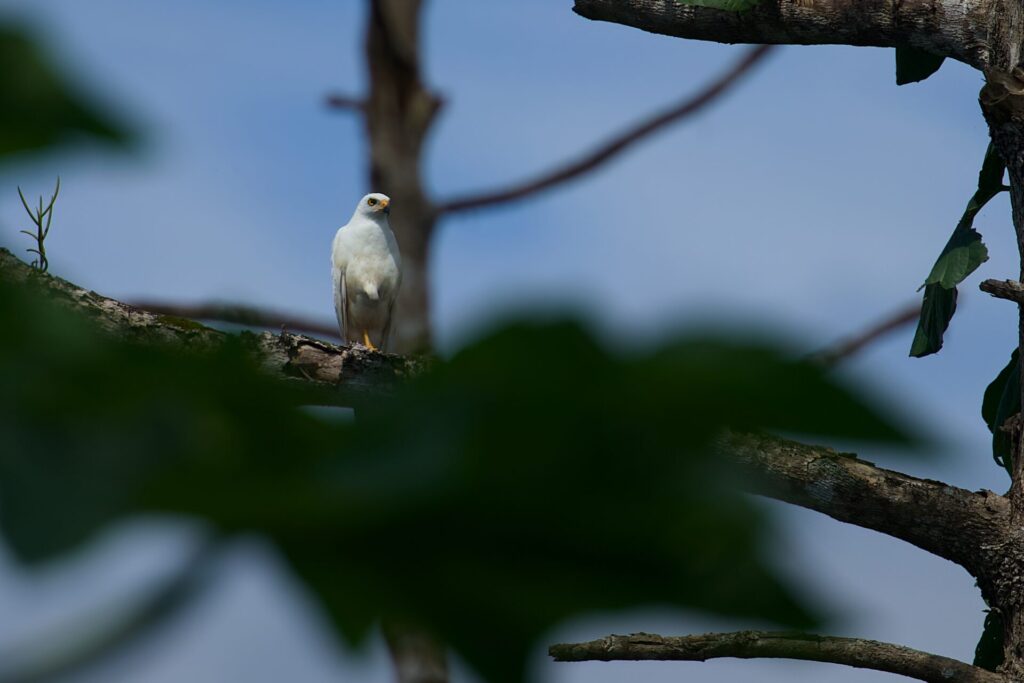
Eurasian Tree Sparrow (Passer montanus), the same species found in Japan, was also observed in the urban area of West Papua.
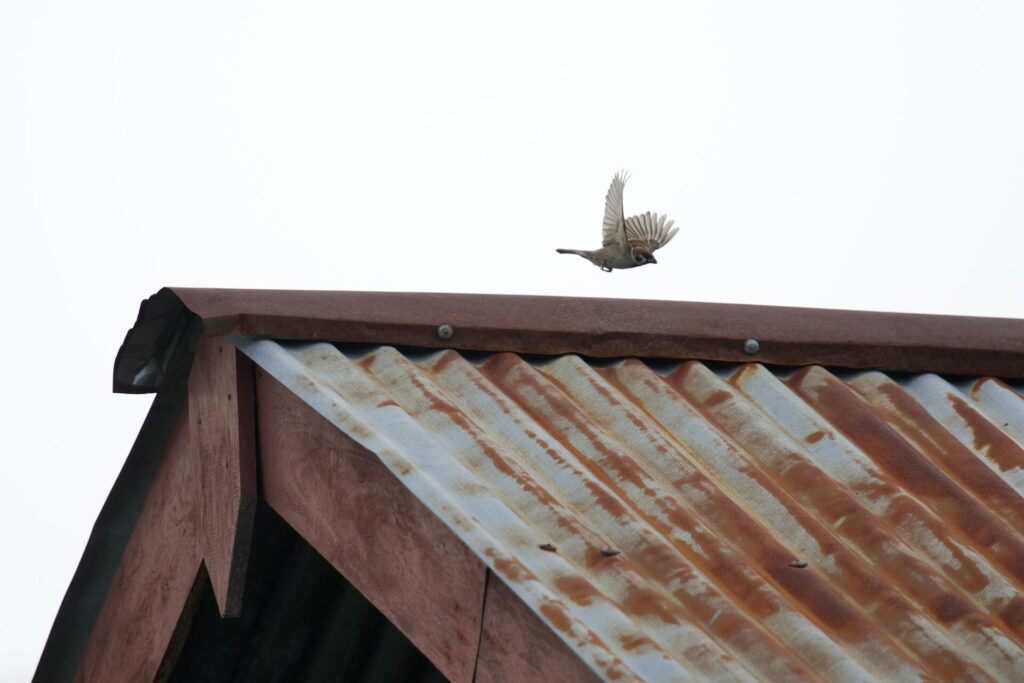
Chestnut-breasted Munia (Lonchura castaneothorax) is notable for its chestnut-colored breast and black-striped sides.
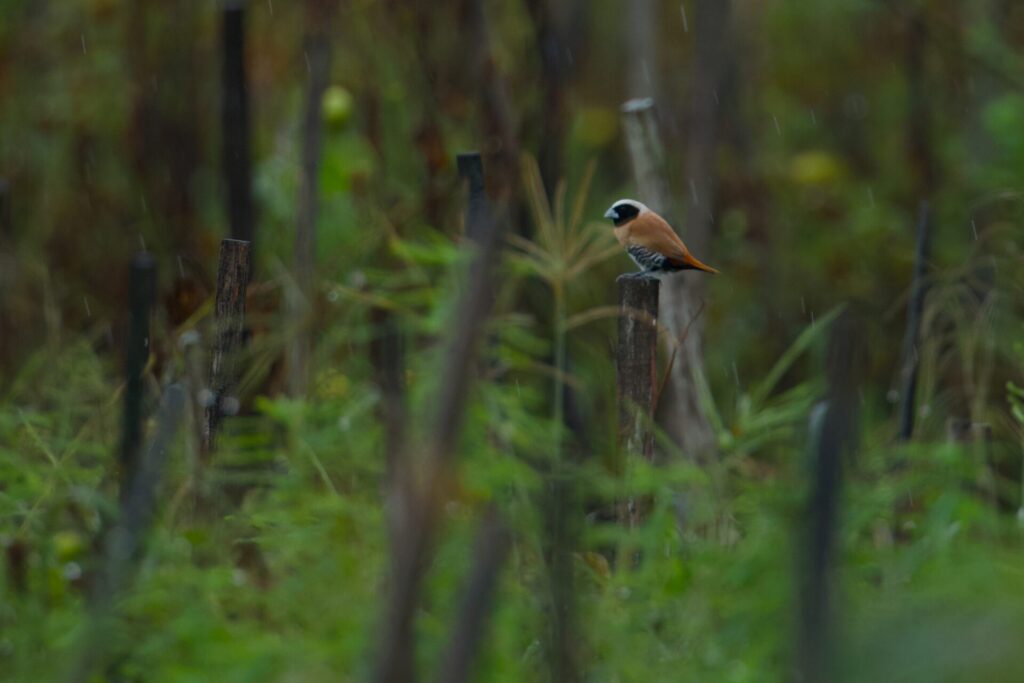
Ground Mannikin was a type of finch observed on the ground as its name suggests.
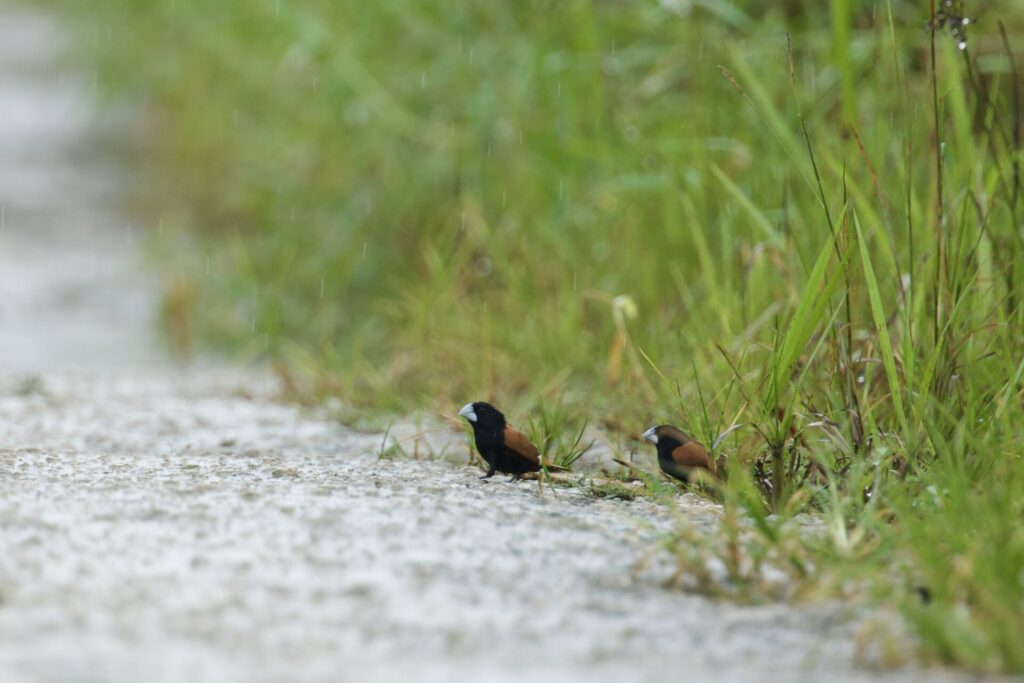
Brown Lory (Chalcopsitta duivenbodei) was seen flying through the sky at dusk after the rain, calling loudly.
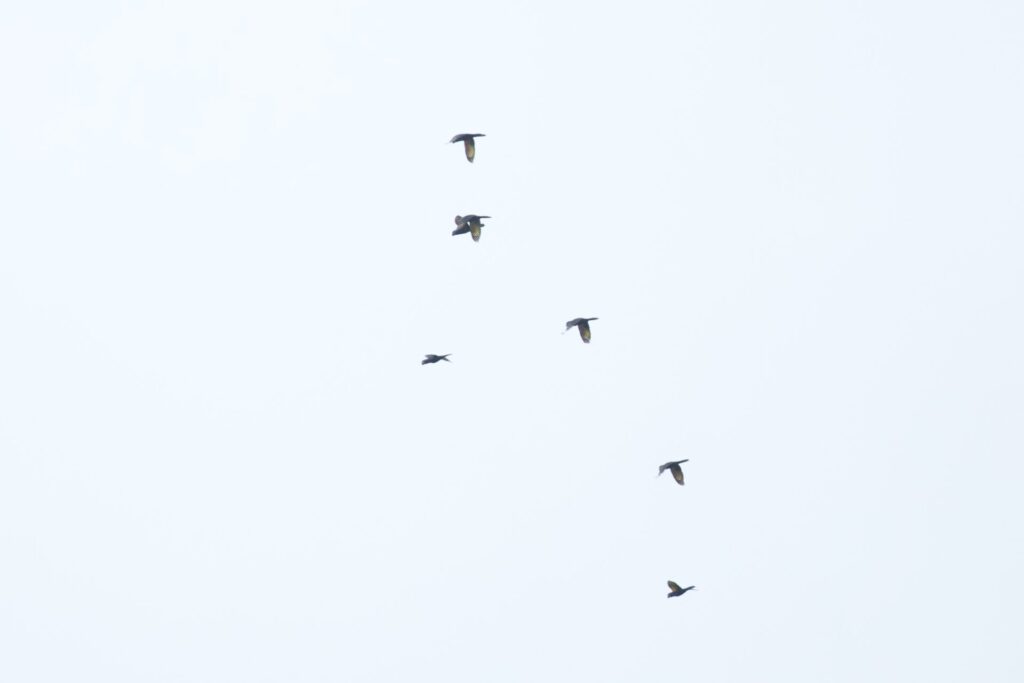
Oriental Dollarbird and Singing Starling (Aplonis cantoroides) were also observed. The young bird had a white belly; adults turn entirely black.
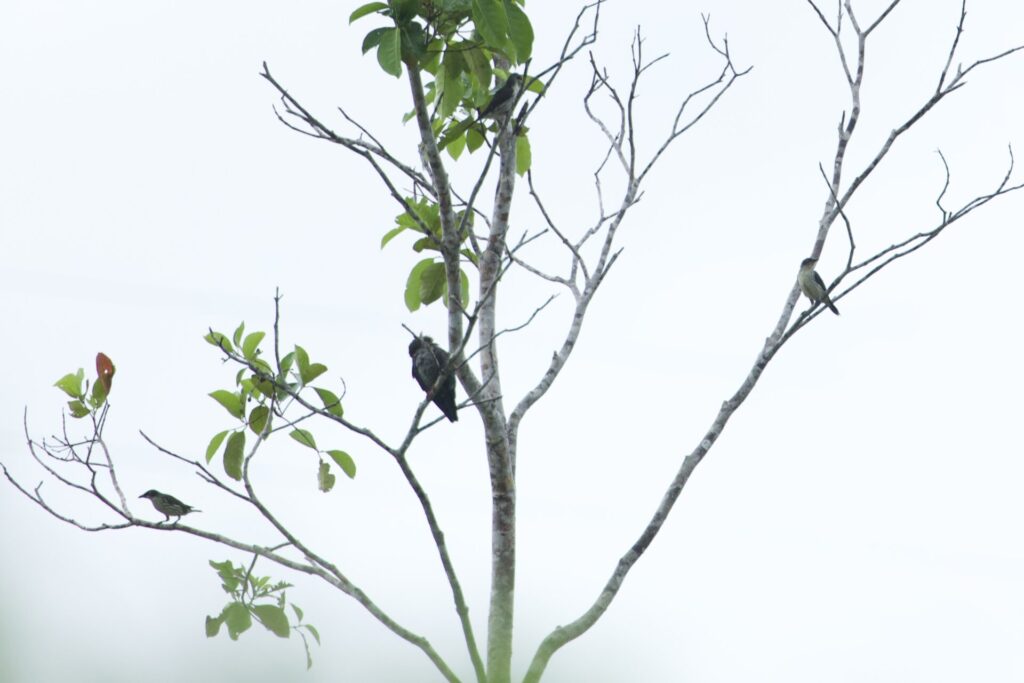
Red-capped Flowerpecker (Dicaeum geelvinkianum) was seen moving through bushes, although the photo was blurry due to the rain.
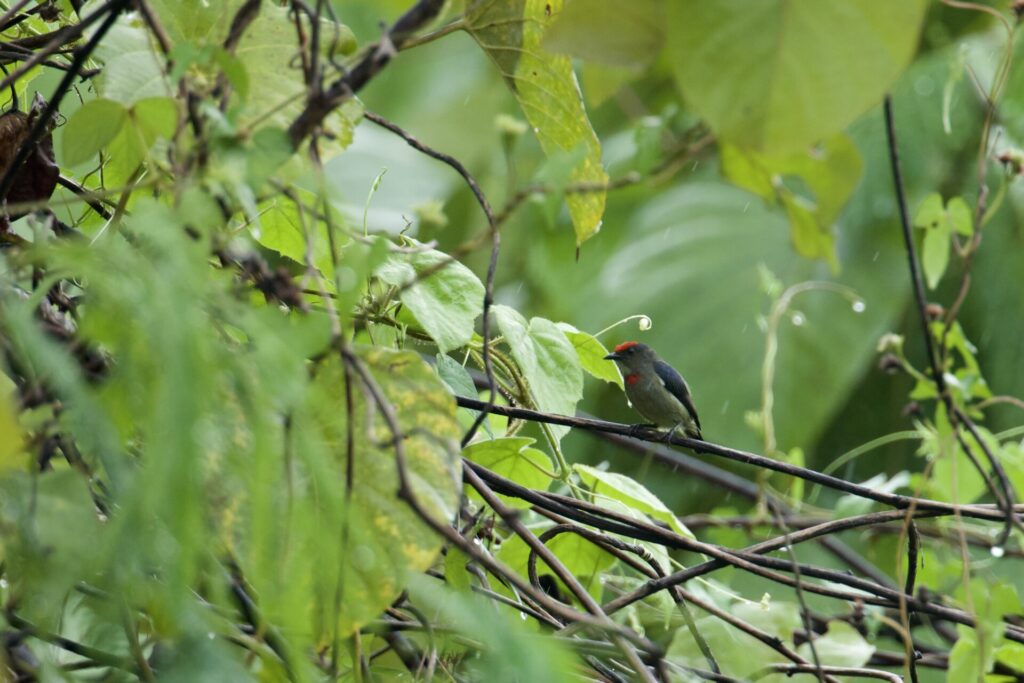
Northern Fantail (Rhipidura rufiventris) was seen perching on a wire after the rain, possibly drying its feathers.
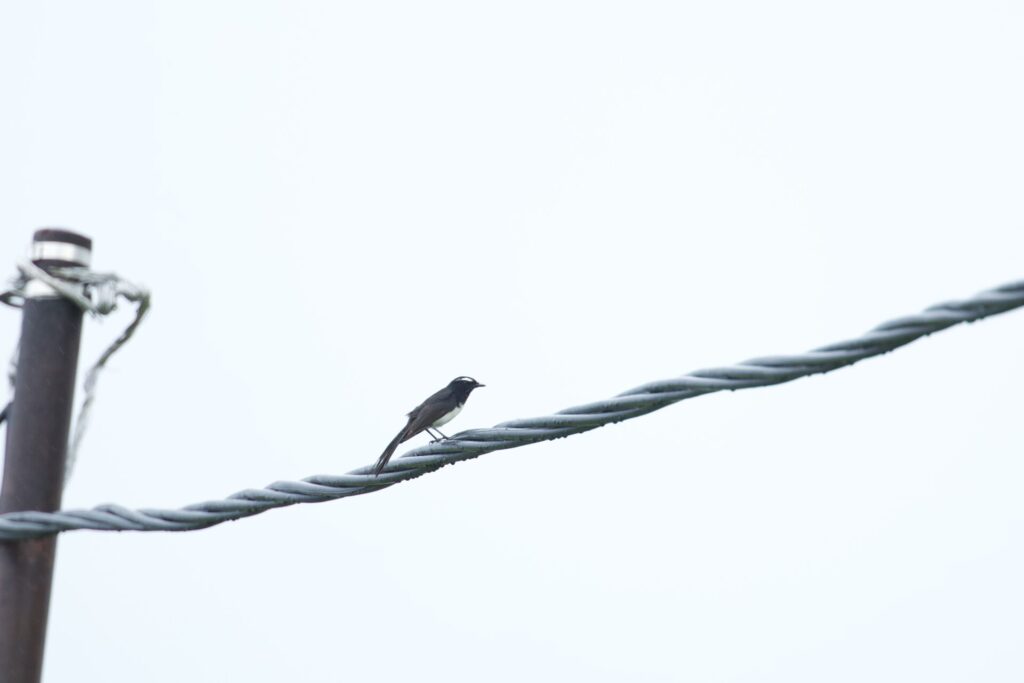
Northern Cassowary (Casuarius unappendiculatus) – the lodge owner said they found this young bird in the forest. It’s known as the world’s most dangerous bird, with legs strong enough to break bones. The homemade cage is deteriorating due to the year-round rain in West Papua, so if it ever breaks out, it could be a major disaster.
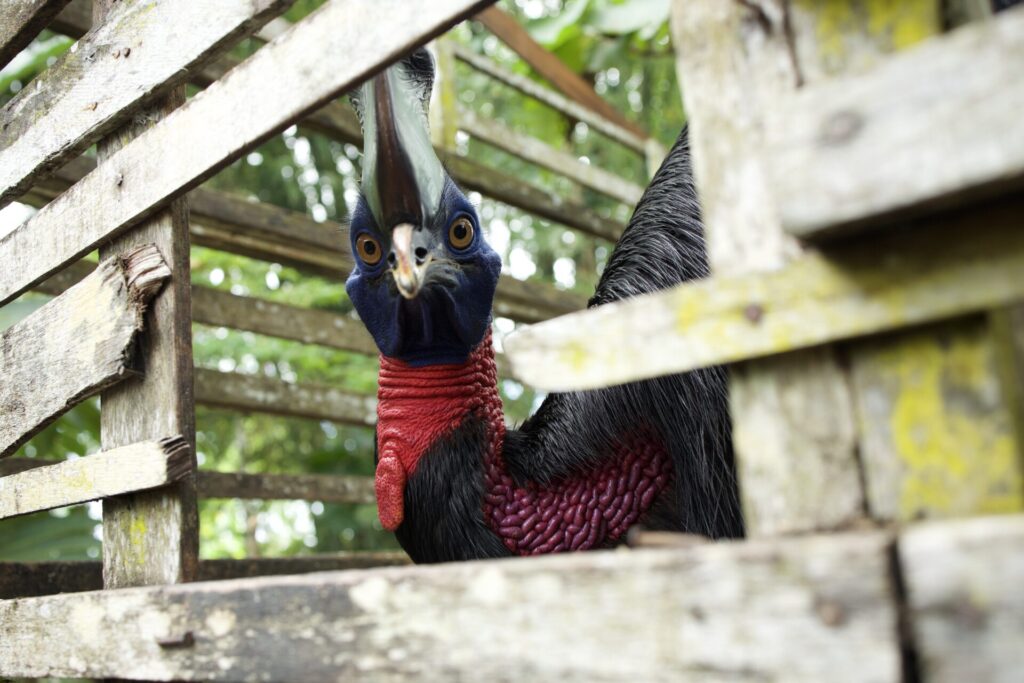
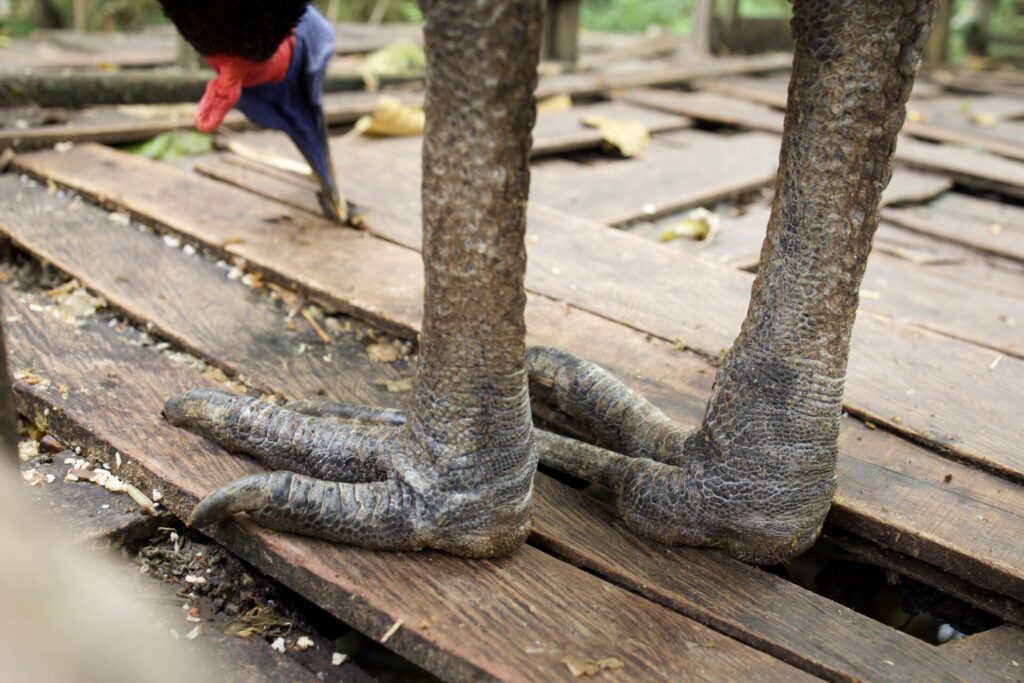
Emerald Tree Skink (Lamprolepis smaragdina) was also observed around the cage area.
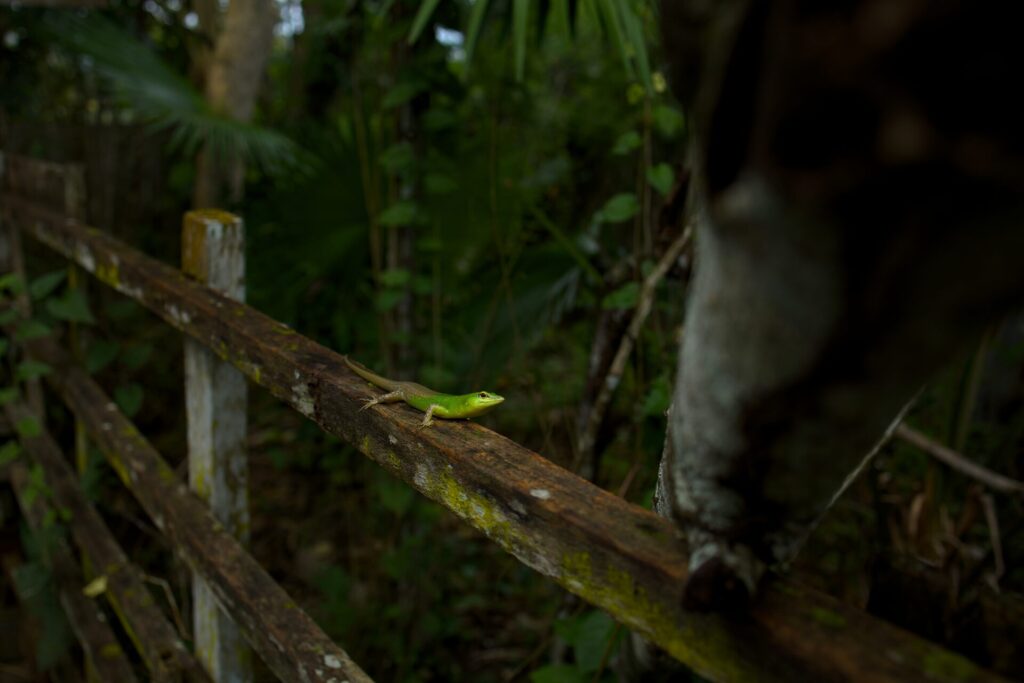
On the second day, we headed early in the morning to the display site of the Twelve-wired Bird-of-paradise (Seleucidis melanoleucus). These birds display on the tallest, sunlit, and open trees in the area, making photography difficult for humans. However, the loud calls and dances from the treetops are breathtaking. As the name suggests, they have 12 wire-like tail feathers, and fluorescent green coloring around their mouth and chest.
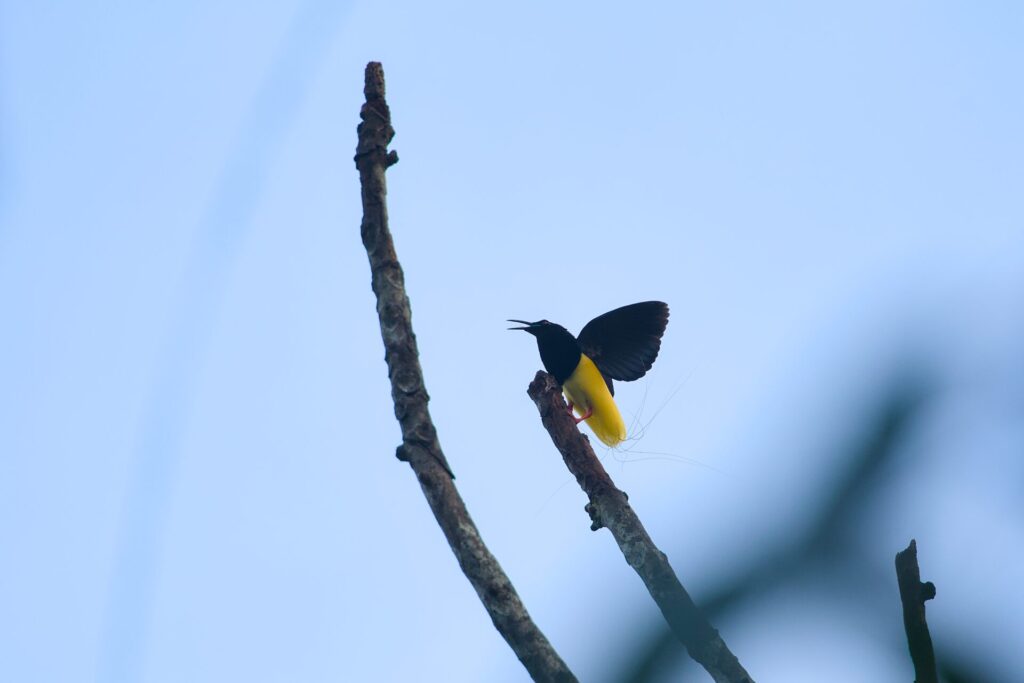
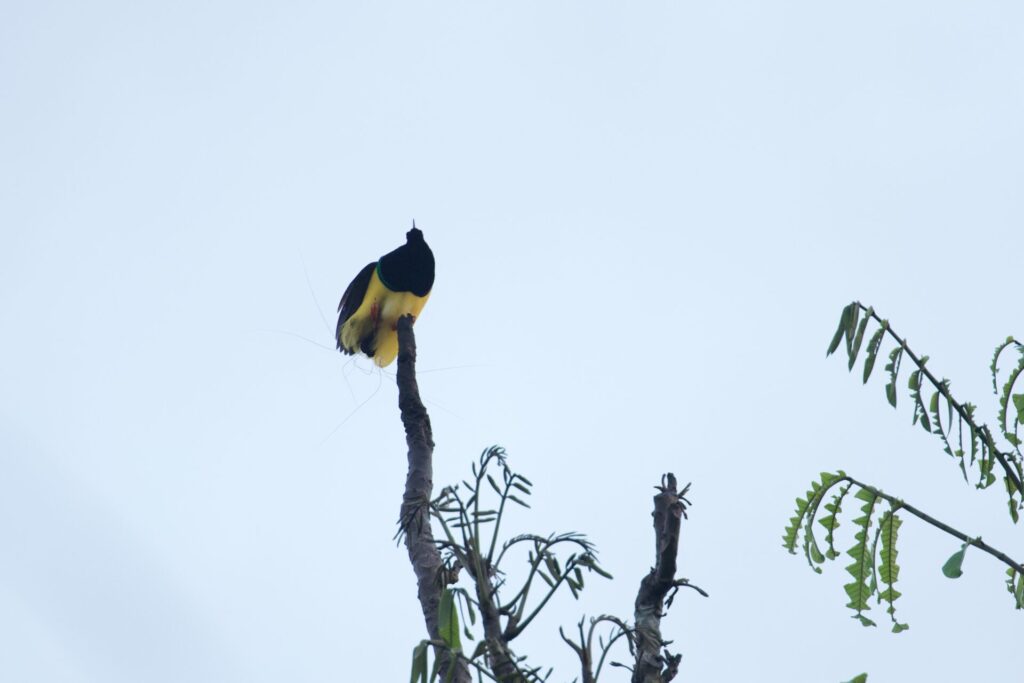
A Pale-billed Sicklebill (Drepanornis bruijnii) also came to the same tree. At first, we thought it might be a female Twelve-wired Bird-of-paradise, but its large beak clearly distinguished it.
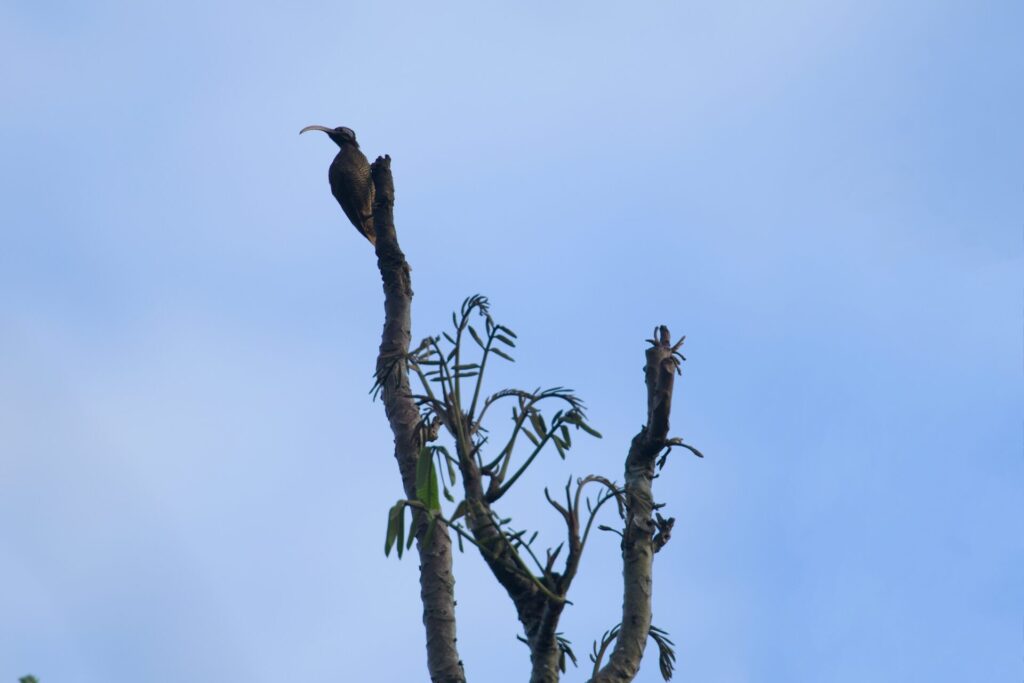
A female Lesser Bird-of-paradise (Paradisaea minor) also appeared. It was amazing to see three different species of birds-of-paradise at a single location on the first day.
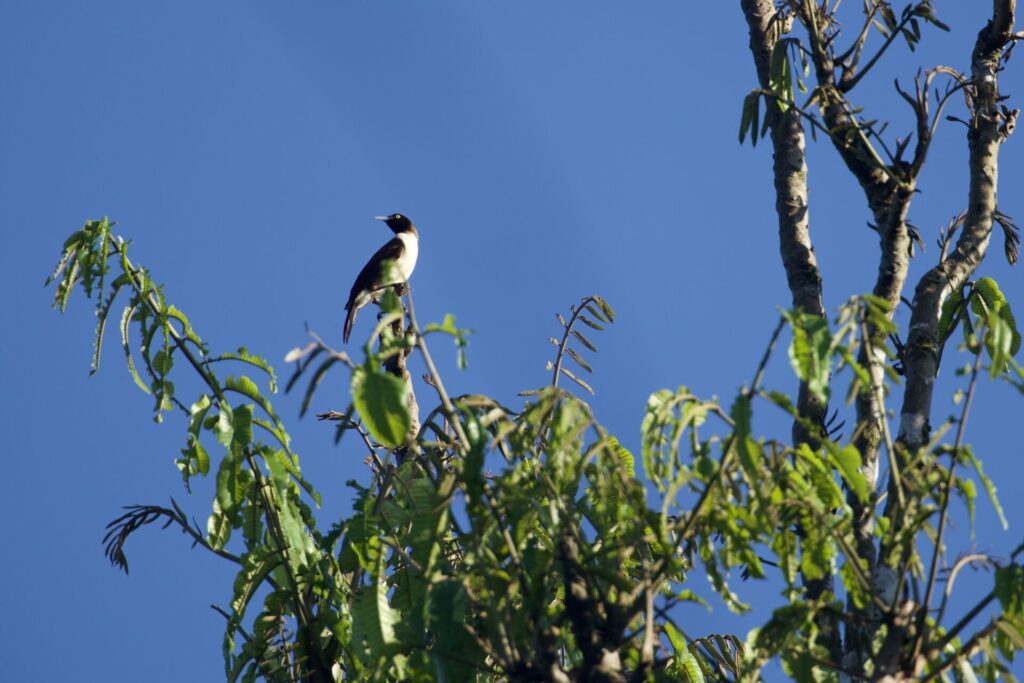
Black-capped Lory (Lorius lory) also visited the same tree and briefly scuffled with the Twelve-wired Bird-of-paradise before flying off.
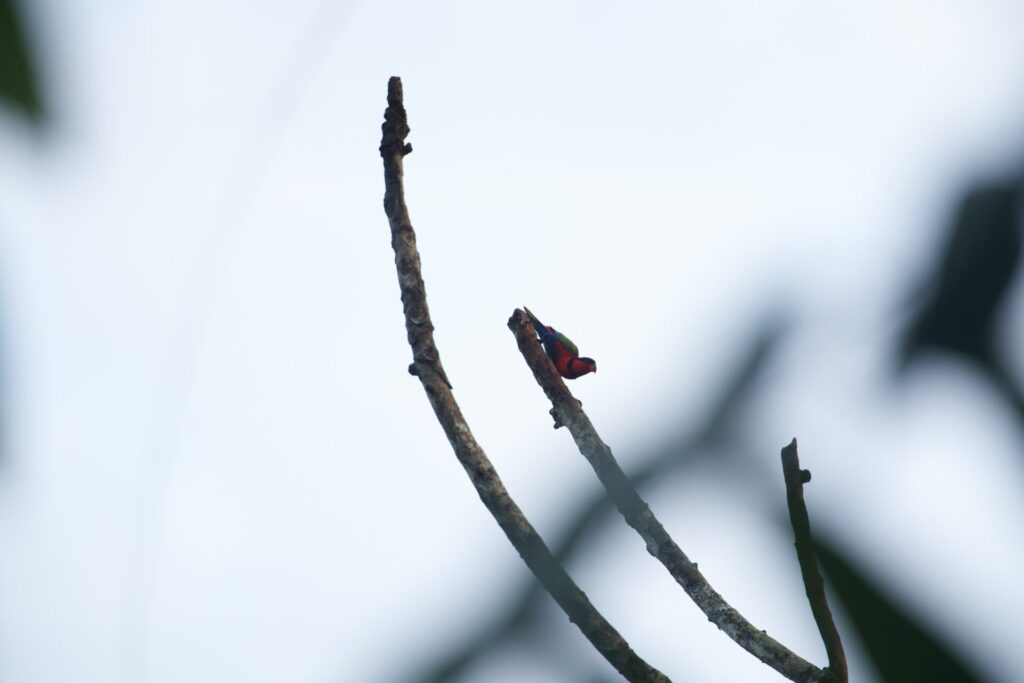
Next, we moved to a different point and observed the beautiful Yellow-billed Kingfisher (Syma torotoro).
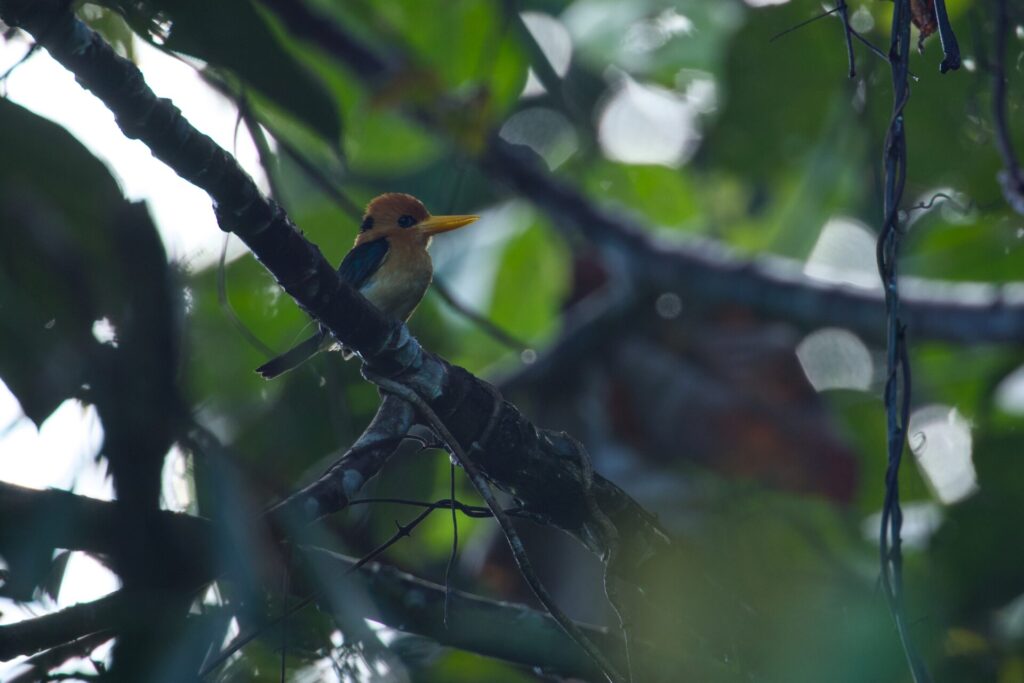
The Common Paradise Kingfisher (Tanysiptera galatea) had shortened tail feathers, indicating the end of the breeding season.
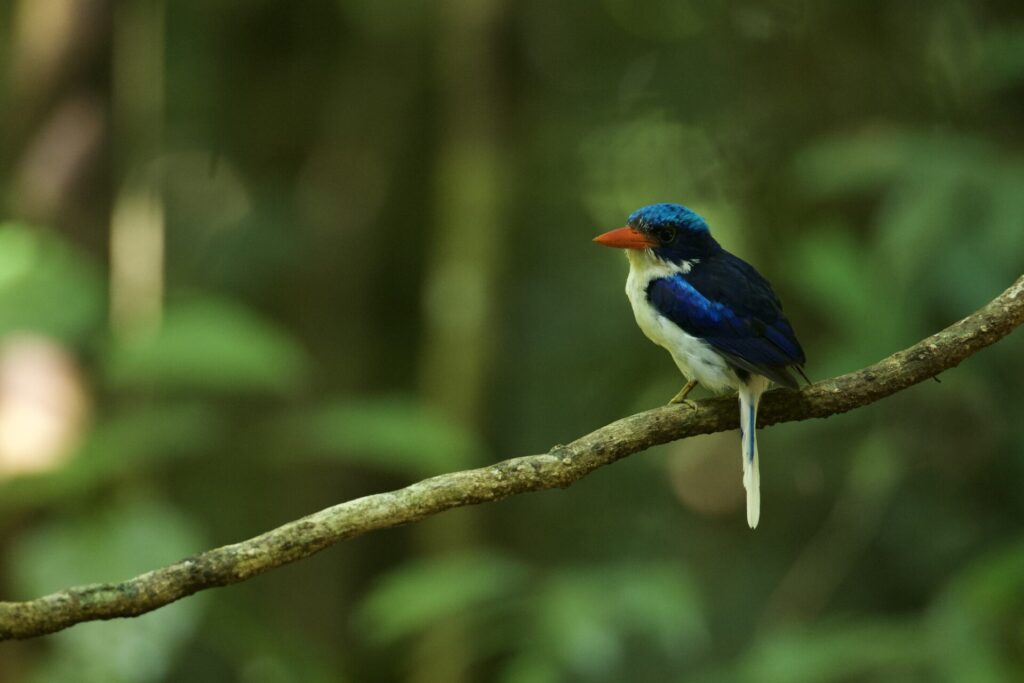
A wild Northern Cassowary also appeared in a plantation after the rain. Witnessing its impressive size and power in the wild was awe-inspiring.
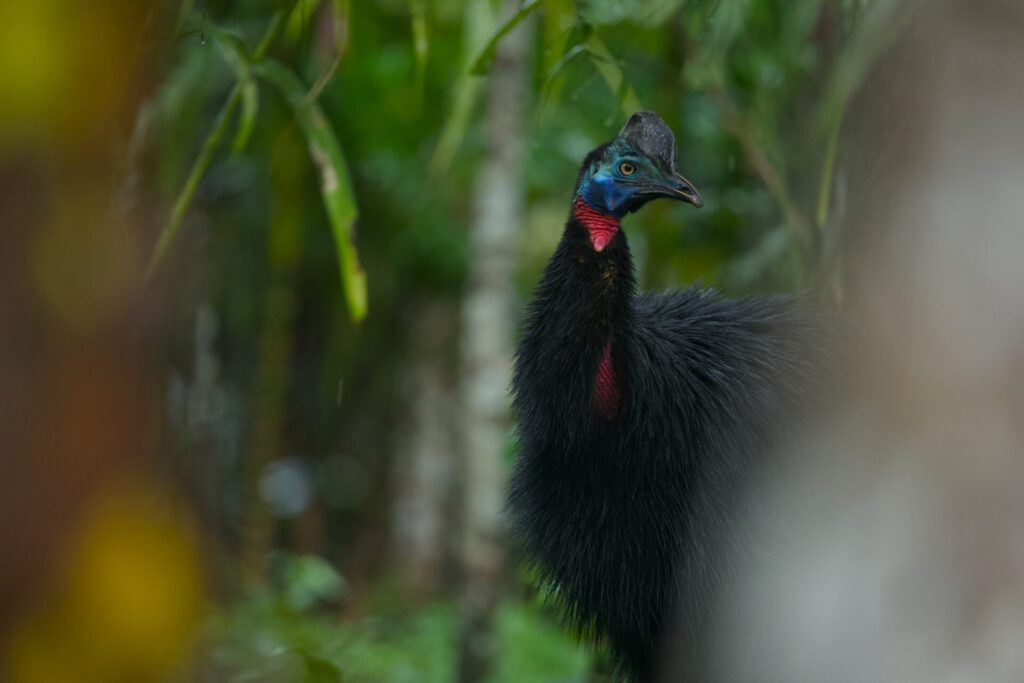
Spotted Dove (Streptopelia chinensis) was also observed.
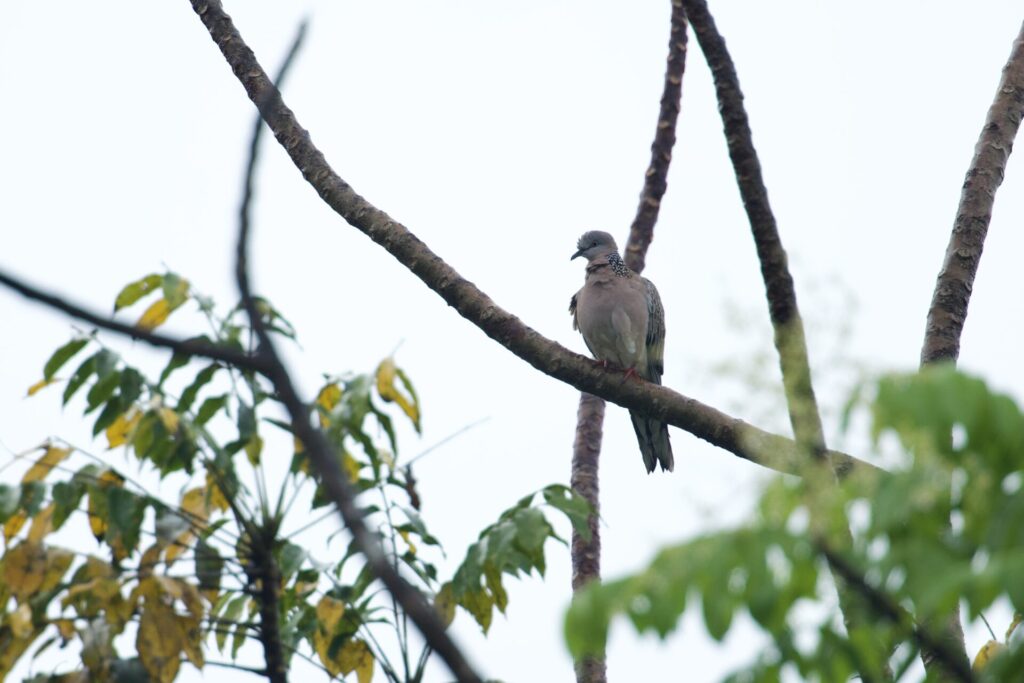
On the third day, we headed early in the morning to a lekking site of the Lesser Bird-of-paradise.

We then waited patiently for the Papuan Pitta (Erythropitta macklotii), but it did not show up.
Later, we observed a family of three Papuan Frogmouths (Podargus papuensis), and returned again to look for the Papuan Pitta, but it was a rainy day and we could not observe it.
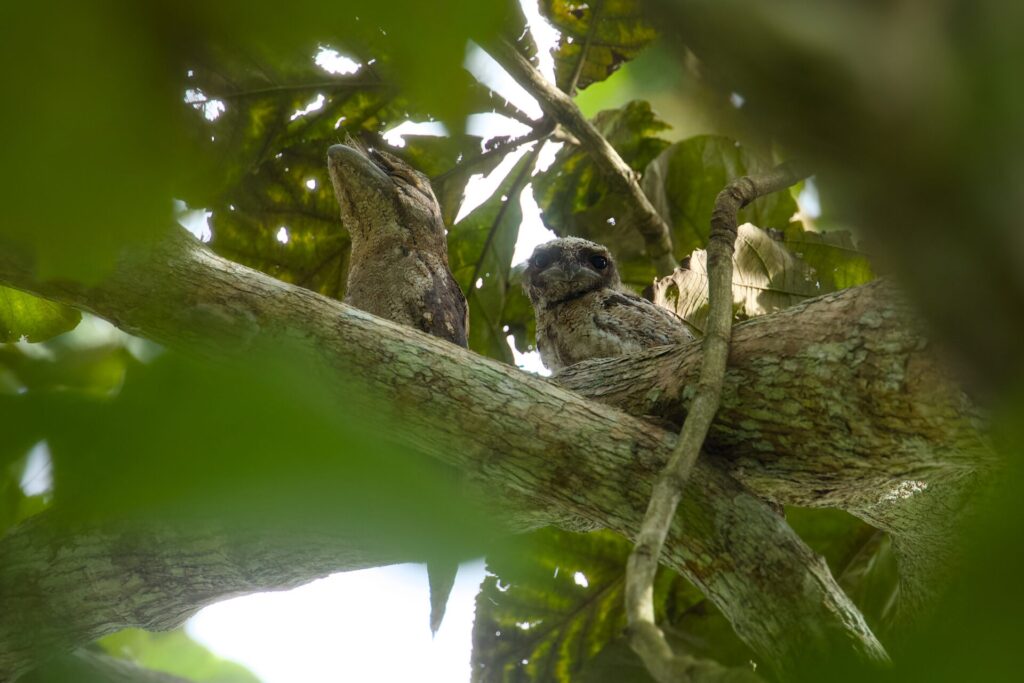
On the fourth day, we observed the King Bird-of-paradise (Cicinnurus regius) early in the morning.
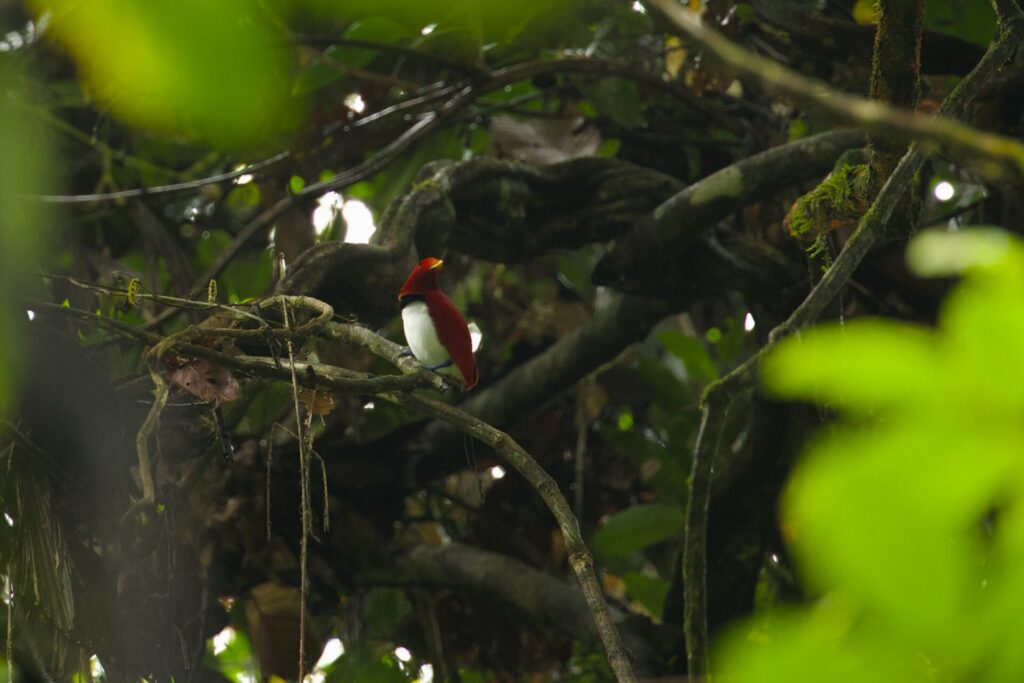
Later, we saw various birds including the smallest parrot in Papua, the Buff-faced Pygmy Parrot (Micropsitta pusio), and then headed home.
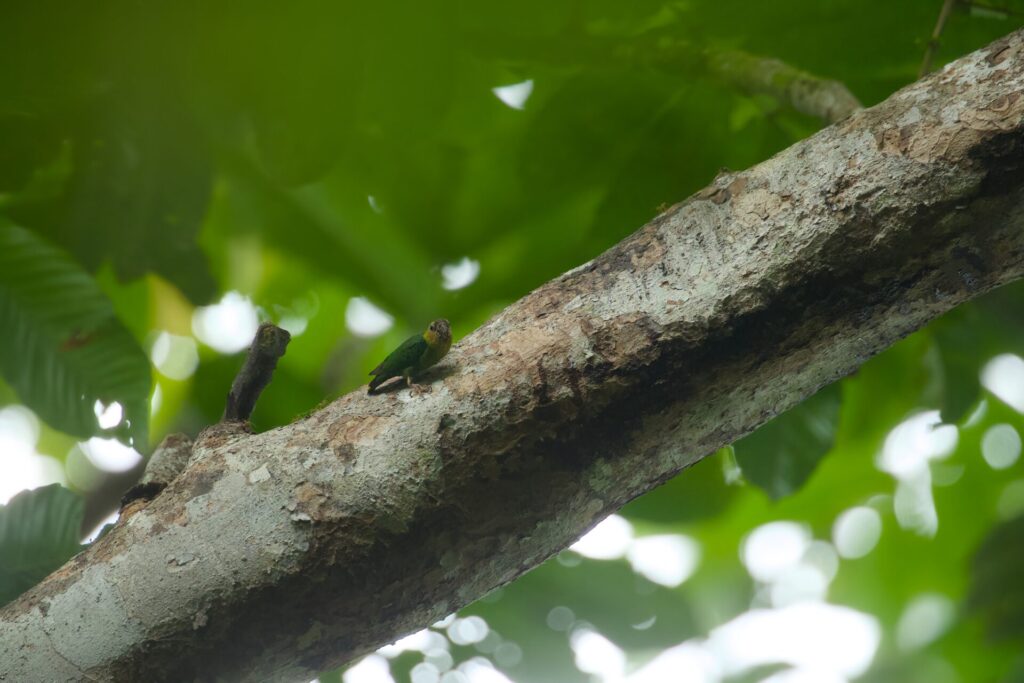
Although we couldn’t observe as much as we had hoped on some rainy days, it was still a fulfilling stay, thanks to the beautiful birds-of-paradise and uniquely evolved wildlife that thrive in this environment.
Next, we will report on our observations in Manokwari and the Arfak Mountains—stay tuned!

